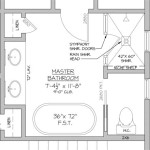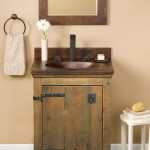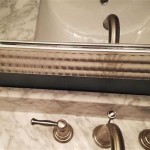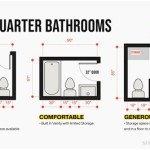Small Narrow Bathroom Cabinet Storage: Maximizing Space in Compact Bathrooms
Bathrooms, particularly in older homes or apartments, often present a spatial challenge. The need to incorporate essential fixtures and storage solutions within a limited footprint necessitates careful consideration of design and functionality. Small, narrow bathroom cabinets offer a practical and aesthetically pleasing solution for maximizing storage in these constricted environments. They are designed specifically for narrow spaces, providing valuable vertical storage without overwhelming the room.
The selection and implementation of small, narrow bathroom cabinets require a thorough understanding of available options, materials, installation considerations, and strategies for effective organization. This article will delve into these aspects, providing a comprehensive overview of how to leverage narrow cabinets to create a functional and visually appealing bathroom, regardless of its size.
Understanding the Variety of Small Narrow Bathroom Cabinets
The market offers a diverse range of small, narrow bathroom cabinets, each with unique features and suitability for different needs and aesthetics. Understanding these variations is crucial for making an informed decision that aligns with specific spatial constraints and personal preferences.
Wall-Mounted Cabinets: These cabinets are affixed to the wall, freeing up valuable floor space. This design is particularly advantageous in small bathrooms as it creates an illusion of spaciousness and simplifies cleaning. Wall-mounted cabinets come in various heights and depths, offering flexibility in terms of storage capacity. They can be positioned above the toilet, sink, or in other underutilized wall areas. Styles range from simple, minimalist designs to more ornate options with mirrored doors or decorative hardware.
Floor-Standing Cabinets: These cabinets stand on the floor and often extend upwards to maximize vertical storage. While they occupy floor space, their narrow profile minimizes intrusion. Some floor-standing options feature legs, which further elevate the cabinet and enhance the feeling of spaciousness. These cabinets often incorporate drawers, shelves, and closed storage compartments, providing versatility in organizing various bathroom essentials. They can be strategically placed in corners or alongside existing fixtures.
Over-the-Toilet Cabinets: Specifically designed to fit above the toilet, these cabinets utilize otherwise wasted space. They typically feature a combination of open shelves and closed cabinets, offering both display and concealed storage options. The installation requires careful measurement and consideration of the toilet height and plumbing. These cabinets are an excellent solution for small bathrooms where floor space is at a premium.
Corner Cabinets: Designed to fit snugly into corners, these cabinets maximize storage in often-overlooked areas. They are available in both wall-mounted and floor-standing versions and can offer a surprising amount of storage in a compact footprint. Corner cabinets often feature angled doors and shelves to optimize space utilization. They are particularly effective in bathrooms with unconventional layouts.
Rolling Carts/Cabinets: These narrow cabinets are equipped with wheels, allowing for easy mobility and flexible storage. They can be moved around the bathroom as needed, providing temporary storage solutions or serving as a mobile vanity. Rolling carts are particularly useful in shared bathrooms or for individuals who prefer to rearrange their bathroom layout frequently. They typically offer a combination of drawers and shelves for versatile storage.
The choice of cabinet style depends on the available space, storage needs, and desired aesthetic. Careful consideration of these factors will ensure that the selected cabinet optimally contributes to the functionality and visual appeal of the small bathroom.
Material Considerations for Longevity and Aesthetics
The material composition of a small, narrow bathroom cabinet significantly impacts its durability, resistance to moisture, and overall aesthetic appeal. Bathrooms are inherently humid environments, making moisture resistance a critical factor in material selection. The following are commonly used materials and their respective characteristics:
Wood: Solid wood is a classic choice for bathroom cabinets, offering a natural warmth and aesthetic appeal. However, wood is susceptible to moisture damage if not properly sealed and maintained. Hardwoods like oak, maple, and cherry are more durable and water-resistant than softwoods like pine. When using wood in a bathroom, it is essential to apply a high-quality sealant or varnish to protect it from moisture and prevent warping or rot.
Engineered Wood (Plywood, MDF): Engineered wood products, such as plywood and medium-density fiberboard (MDF), offer a more cost-effective alternative to solid wood. Plywood is composed of multiple layers of wood veneer glued together, providing good strength and stability. MDF is made from wood fibers compressed with resin, creating a smooth surface that is ideal for painting or laminating. Both plywood and MDF are less susceptible to warping than solid wood, but they still require sealing to protect them from moisture. MDF is particularly prone to swelling if exposed to water, so it is crucial to use moisture-resistant MDF (MR MDF) in bathroom applications.
Laminate: Laminate is a synthetic material that is applied to a substrate, such as plywood or MDF. It is available in a wide range of colors, patterns, and textures, including wood-grain finishes. Laminate is durable, scratch-resistant, and easy to clean, making it a popular choice for bathroom cabinets. It is also relatively moisture-resistant, but the edges of the laminate can be vulnerable to water damage if not properly sealed.
Metal: Metal cabinets offer a sleek and modern aesthetic and are highly resistant to moisture. Stainless steel and aluminum are common choices for bathroom cabinets, as they are rust-resistant and easy to clean. Metal cabinets can be powder-coated in various colors to match the bathroom décor. However, metal cabinets can be prone to dents and scratches, and they may feel cold to the touch.
Glass: Glass is often used for cabinet doors or shelves, adding a touch of elegance and sophistication to the bathroom. Tempered glass is a strong and durable option that is resistant to shattering. Glass is easy to clean and does not absorb moisture. However, glass cabinets require more frequent cleaning to remove fingerprints and water spots.
The choice of material should consider the bathroom's overall design aesthetic, budget constraints, and the level of maintenance required. Selecting moisture-resistant materials and ensuring proper sealing and ventilation will significantly extend the lifespan of the cabinet.
Installation and Organization Strategies for Optimal Functionality
Proper installation and effective organization are crucial for maximizing the functionality of a small, narrow bathroom cabinet. Careful planning and execution will ensure that the cabinet provides accessible and efficient storage.
Installation Considerations: Before installing a bathroom cabinet, it is essential to carefully measure the available space and consider the location of plumbing and electrical fixtures. Wall-mounted cabinets require secure anchoring to wall studs to ensure stability. Floor-standing cabinets should be placed on a level surface. Over-the-toilet cabinets require precise measurements to ensure they fit comfortably above the toilet without interfering with plumbing or user access. It is advisable to consult with a professional installer if you are unsure about any aspect of the installation process.
Interior Configuration: The interior configuration of the cabinet should be tailored to the specific storage needs. Adjustable shelves allow for flexible storage of items of varying heights. Drawers provide convenient storage for smaller items, such as makeup, toiletries, and accessories. Dividers and organizers can be used to separate items within drawers and prevent clutter. Consider incorporating pull-out shelves or baskets to make it easier to access items stored at the back of the cabinet. Door-mounted organizers can provide additional storage for small items, such as toothbrushes, shaving cream, and hair products.
Organizational Techniques: Effective organization is key to maximizing the storage capacity of a small, narrow bathroom cabinet. The following organizational techniques can help:
*Declutter Regularly: Periodically review the contents of the cabinet and remove any expired products or items that are no longer used. This will create more space and make it easier to find what you need.
*Group Similar Items: Organize items by category, such as skincare products, hair products, and toiletries. This will make it easier to locate specific items and prevent clutter.
*Use Clear Containers: Store small items in clear containers, such as plastic bins or glass jars. This will allow you to easily see the contents of each container and prevent items from getting lost.
*Utilize Vertical Space: Stack items vertically to maximize the use of vertical space. Use shelf dividers or tiered organizers to create multiple levels of storage.
*Label Everything: Label shelves, drawers, and containers to clearly identify the contents. This will help you stay organized and prevent items from being misplaced.
By carefully considering the interior configuration and implementing effective organizational techniques, individuals can optimize the storage capacity of a small, narrow bathroom cabinet.
In conclusion, small, narrow bathroom cabinets offer a versatile and effective solution for maximizing storage in compact bathrooms. By carefully considering the various cabinet styles, material options, installation requirements, and organizational strategies, individuals can transform their small bathrooms into functional and visually appealing spaces. The key is to prioritize space optimization, moisture resistance, and efficient organization to create a bathroom that is both practical and aesthetically pleasing.

Sennen Super Slim Bathroom Storage Cabinet Small White Wooden Organiser Diy At B Q

Slim Bathroom Storage Cabinet Narrow Stand Black Aojezor Com

Dorset 17cm Very Slim Narrow White Bathroom Storage Furnitue With 4 Drawers

5 Stunning Bedroom Storage Ideas Slim Bathroom Small Remodel Cabinet

Honey Joy Narrow Bathroom Storage Cabinet Freestanding Side Organizer With Adjustable Shelves Drawer White Topb006671 The Home Depot

Toilet Paper Stand Holder Beside Storage For Bathtroom Bathroom With Black Insert Narrow Cabinet Small Space By Aojezor Com

Kleankin Tall Bathroom Cabinet Slim Storage Narrow Floor With 3 Drawers And 2 Open Shelves Linen Tower For Small Space Target

Urtr White Storage Cabinet With 2 Doors 1 Drawer Tall Bathroom Adjustable Shelf Narrow Floor T 02106 K The Home Depot

Slimline Rattan Bathroom Storage Cabinet In White Diy At B Q

Bathroom Floor Storage Cabinet Solid Wood
Related Posts







